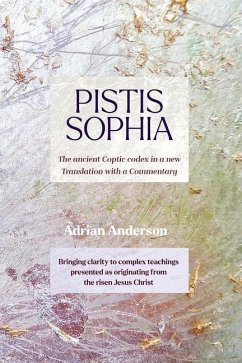The Pistis Sophia codex is the most valuable record of ancient esoteric Christianity ever found - but until now large sections of it were incomprehensible. Dr. Anderson's scholarship with the original Coptic and Greek text has resulted in a translation which provides much needed clarity. Core aspects of this esoteric Christianity were established through his The Gospel of John - an Initiatory Quest translation, which revealed the veiled esoteric basis of the Gospel. The teachings in the codex are presented as a dialogue between the disciples and the risen Christ about spiritual realities and the initiatory path. The structure of the cosmos underlying this text, especially the twelve Aions, has now been resolved. Without this, it was impossible to put most of the teachings into any context. The work of Rudolf Steiner was an invaluable resource for this task. The story of Pistis Sophia is revealed as a dramatic presentation of the task of protecting humanity's faculty of spiritual perception, undertaken by Christ. Reincarnation and Fate (karma) are regarded as compatible with both 'forgiveness' of sins and the deeper, esoteric 'cancelling' of sins. There is also a valuable Introduction, an Index and two helpful diagrams. The last two documents of the codex (60 pages) have been omitted. This is explained in the Introduction.
Hinweis: Dieser Artikel kann nur an eine deutsche Lieferadresse ausgeliefert werden.
Hinweis: Dieser Artikel kann nur an eine deutsche Lieferadresse ausgeliefert werden.


